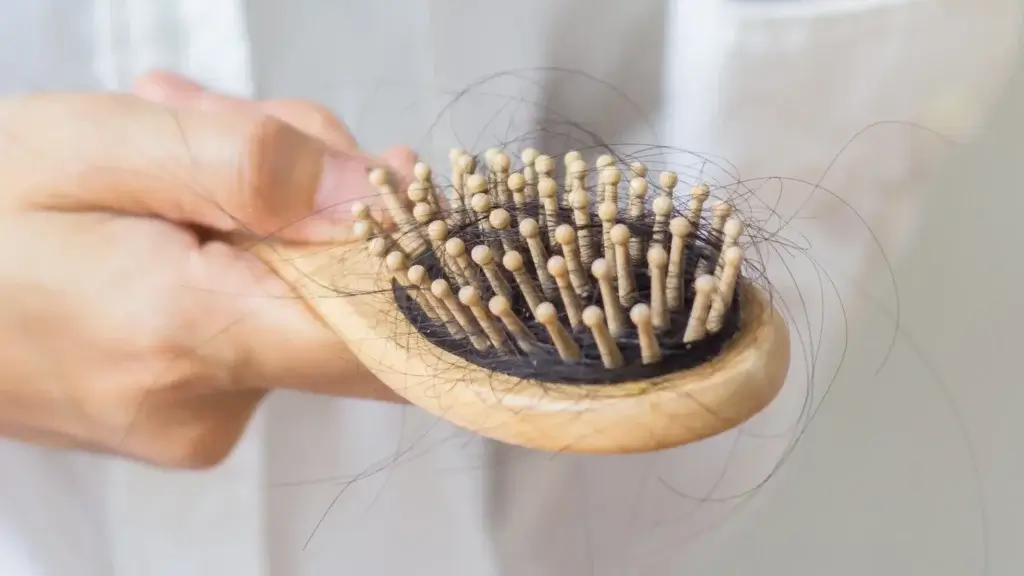What Is scalp micropigmentation?
Scalp Micropigmentation (SMP) is a non-surgical cosmetic procedure that involves the application of specialized pigments on the scalp to replicate the appearance of natural hair follicles. It primarily addresses hair loss, thinning hair, or baldness by creating the illusion of a closely-shaved or buzzed hairstyle. Scalp Micropigmentation can provide the appearance of a fuller head of hair, camouflage scars, or create a more defined hairline. The procedure involves precisely placing pigments into the upper layer of the scalp using fine needles or micro-needles, resulting in a natural and realistic look.
smp before and after

Do i have to shave my head before SMP?
Many Scalp Micropigmentation artists recommend shaving the head before the hair pigmentation procedure for several reasons:
1. Creating an even and consistent look: Shaving the head before Scalp Micropigmentation ensures that the pigmentation is applied to a smooth and uniform surface. Shaving helps eliminate any unevenness or irregularities caused by varying hair lengths or textures. By removing existing hair, the technician can create a more accurate replication of hair follicles and achieve a natural-looking result.
2.Better visibility of the scalp: Shaving the head allows the technician to have a clear view of the entire scalp. This visibility is essential for accurately assessing the scalp’s condition, identifying areas that require pigmentation, and determining the most appropriate placement and density of the pigments. It enables the technician to create a more precise and aesthetically pleasing outcome.
3.Prevention of interference from existing hair: The remaining hair on the scalp can interfere with the scalp micropigmentation procedure. Hair strands may obstruct the application of pigments or cause uneven distribution, resulting in an inconsistent appearance. Shaving the head eliminates any potential interference from existing hair, allowing for a smoother and more controlled procedure.
Shaving the head before ensures clear skin for the technician to work on, increases the visibility of the scalp, and minimizes any potential obstacles or inconsistencies that could affect the final accepted result. Shaving before hair pigmentation enables the technician to achieve a more even, consistent, and natural-looking replication of hair follicles, contributing to a successful SMP treatment.
When is Shaving not necessary for hair pigmentation?
Shaving may not always be necessary before undergoing Scalp Micropigmentation, depending on the specific circumstances and the client’s preferences. Here are a few situations where shaving may not be required:
1. Existing shaved head:
If the client already maintains a regularly shaved head and has a consistent hair length across the scalp, there may be no need to shave before hair pigmentation. In such cases, the technician can work with the existing hair length to create the desired micro pigmentation effect without disrupting the client’s usual hairstyle.
2. Scar concealment:
If the primary purpose of the micro pigmentation procedure is to camouflage a specific scar on the scalp, shaving the entire head may not be necessary. Instead, the technician can focus solely on the scarred area and carefully match the pigments to the surrounding hair, leaving the rest untouched.

3. Adding density to thinning hair
Shaving may not be required when the client has thinning hair but still retains a reasonable length. The micro pigmentation procedure can be performed by strategically placing pigments between the existing hair strands to add the appearance of density and create a fuller look.
4. Patchy hair loss
Shaving may be unnecessary if the client has patchy hair loss or specific areas with minimal hair. The technician can work around the existing hair, targeting specific areas that require pigmentation to blend and create a seamless transition with the natural hair.
It’s important to note whether shaving should be discussed with the hair pigmentation technician or clinic. They will evaluate your situation and guide the most appropriate approach to achieve the desired hair micropigmentation outcome while considering your existing hair, scalp condition, and treatment goals.

scalp micropigmentation cost
The final cost of scalp micropigmentation in Toronto usually depends on the extent of the balding area on the scalp. The larger the area of baldness, the more materials and time will be required to complete the hair micropigmentation process. Additionally, the skill and experience of the technician will also have a significant impact on the cost. Below, we have provided an approximate cost for each session. Please note that the total number of treatments typically ranges from 3 to 5 sessions.
SMP Area | Estimated Cost |
SMP for Full Head Coverage | 3000 to 4500 CAD |
Hairline and front head only | 1800 to 2500 CAD |
Preparing for Scalp Micropigmentation
1. Communication with the SMP clinic:
Before the procedure, it’s essential to have clear contact with the clinic. They will provide specific instructions and guidelines tailored to your individual needs and the planned approach for your SMP treatment.
2. Scalp preparation:
a. Cleanse the scalp: It’s essential to cleanse your scalp thoroughly before the procedure to remove any dirt, oils, or styling products. The clinic recommends a gentle cleanser or shampoo to ensure a clean and residue-free scalp. b. Avoid excessive moisture: While having a clean scalp is essential, avoid excessive moisture or hydration on the day of the procedure, as it may affect the absorption of pigments. Follow the clinic’s instructions regarding how soon before the appointment you should wash your hair.
3. Hair length and shaving:

a. Follow clinic instructions: If the clinic advises shaving the head before hair pigmentation, follow their instructions regarding the recommended hair length and the ideal time to shave. They will guide you on how close to the procedure you should shave for the best results. b. Maintain a consistent length: If shaving is unnecessary, maintain a constant hair length across the scalp to ensure an even and natural-looking outcome. Avoid altering your usual hairstyle or trimming the hair irregularly before the appointment.
4. Attire for the appointment:
a. Choose comfortable clothing: Wear comfortable and loose-fitting clothing on the day of the procedure. This will ensure you feel relaxed and at ease during the treatment. b. Dark-colored clothing: It is a good idea to wear dark-colored clothing to the appointment, as there may be minor pigment residue or ointments used during the procedure that could stain lighter-colored garments.
5. Managing discomfort:
a. Topical anesthetics: Discuss with the hair micropigmentation clinic if topical anesthetics are recommended or provided to manage any discomfort during the procedure. They can help numb the scalp and minimize any potential discomfort. b. Communicate with the technician: If you experience discomfort or sensitivity during the process, communicate this to the hair pigmentation technician. They can make adjustments to ensure your comfort throughout the session.
Remember, these guidelines are general recommendations, and it’s crucial to follow the specific instructions provided by your scalp pigmentation clinic. They will have the most accurate and personalized advice for your preparation, taking into account your unique circumstances and treatment plan.
SMP Aftercare
1. Follow post-procedure instructions:
The hair micropigmentation clinic will provide detailed aftercare instructions for your treatment. Following these instructions carefully is crucial to promote proper healing and optimal results.
2. Cleansing the scalp:
a. Use a mild cleanser: Cleanse the scalp with a mild, non-abrasive cleanser recommended by the clinic. Avoid harsh or abrasive products that irritate the scalp or interfere with the pigmentation. b. Gentle washing: During the initial healing period, gently wash the scalp using your fingertips or a soft cloth. Avoid scrubbing or rubbing the treated areas forcefully.
3. Moisturizing the scalp:
a. Recommended moisturizers: Apply the moisturizer prescribed or recommended by the hair pigmentation clinic. This helps keep the scalp hydrated and promotes healing. b. Avoid heavy products: Avoid using heavy or oily moisturizers that could clog the pores or affect the pigmented areas. Use lightweight, non-comedogenic moisturizers suitable for the scalp.
4. Protecting the scalp: a. Sun protection:

Protect your scalp from direct sun exposure by wearing a hat or using a sunscreen specifically formulated for the scalp. Sunscreen with a minimum SPF of 30 is recommended. b. Avoid swimming and excessive sweating: Refrain from swimming in chlorinated pools or salt water and participating in activities that cause excessive sweating until the scalp has fully healed. Excessive moisture can affect pigmentation.
5. Avoiding certain activities:
a. Touching or scratching: Avoid touching or rubbing the treated areas to prevent irritation or potential infection. Keeping the scalp clean and minimizing unnecessary contact is essential. b. Avoid harsh hair treatments: Refrain from using powerful hair care products, such as solid dyes, bleaches, or chemical medicines, as they can interfere with the pigmentation and potentially cause skin irritation.
6. Scheduling touch-up appointments:
a. Follow-up sessions: Depending on the specific scalp pigmentation plan, touch-up appointments may be necessary to perfect the results or address any areas that require additional pigmentation. b. Consult with the clinic: Consult with the scalp pigmentation clinic to determine the recommended timeline for touch-up appointments. They will assess the healing progress and advise you on the appropriate timing for any required follow-up sessions.
Remember, proper aftercare is crucial for the long-term success of your scalp micropigmentation. Don’t hesitate to contact your scalp micropigmentation clinic for guidance and support if you have any concerns or questions during the healing process.
For more information please read : Scalp Micropigmentation Pre and Aftercare
how long does scalp micropigmentation last?
The answer is that scalp micropigmentation can last for many years, but the length of time it lasts will depend on several factors, such as how well you take care of your scalp and how often you get the procedure done.
After your scalp micropigmentation is complete, you will need to take care of it. The following are some tips in this blog:
scalp micropigmentation near me
Golden pulse is a scalp micropigmentation in Toronto. Before choosing your SMP artist or clinic, consider the following general guidelines on what to look for in a high-quality Scalp Micropigmentation training and service center to avoid any regrets!
1. Reputation
Look for a center with a strong reputation in the hair pigmentation industry. Check for online reviews, testimonials, and recommendations from previous clients or trainees. A center with positive feedback and a good track record will likely provide quality training and services.
2. Experienced and Qualified Professionals
Ensure the center has experienced micropigmentation technicians and knowledgeable trainers. They should have proper certifications and qualifications to perform hair pigmentation procedures and deliver practical training.
3. Comprehensive Training Programs
Assess the center’s curriculum if you want training. A reputable micro pigmentation training center will offer comprehensive programs that cover theoretical knowledge, practical skills, hands-on training, and ongoing support. The training should include client consultation, technique mastery, equipment usage, safety protocols, and business management.
4. Demonstrable Results
Examine the center’s portfolio or gallery to see before and after photos of their micropigmentation work. This will give you an idea of their skill and ability to produce natural-looking results. Look for consistent and well-executed scalp micropigmentation treatments

5. Hygiene and Safety Practices
A reliable center should prioritize hygiene and safety. They should follow strict sterilization protocols, maintain a clean environment, and use high-quality, disposable equipment to ensure client safety and minimize the risk of infection.
6. Client Testimonials and Satisfaction
Positive testimonials and satisfied customers indicate a reputable scalp micropigmentation center. Look for feedback from previous clients undergoing scalp pigmentation treatments at the center. Their experiences and satisfaction levels can provide valuable insights into the quality of service offered.
7. Ongoing Support and Continued Education
A reputable scalp micropigmentation center should offer ongoing support and opportunities for continued education. This can include follow-up sessions, guidance on post-treatment care, and access to updated techniques and industry advancements.
Conduct thorough research, request information directly from the center, and consider your needs and preferences before deciding.
You may contact us at Golden Pulse Academy for further information or to book your free consultation session.




